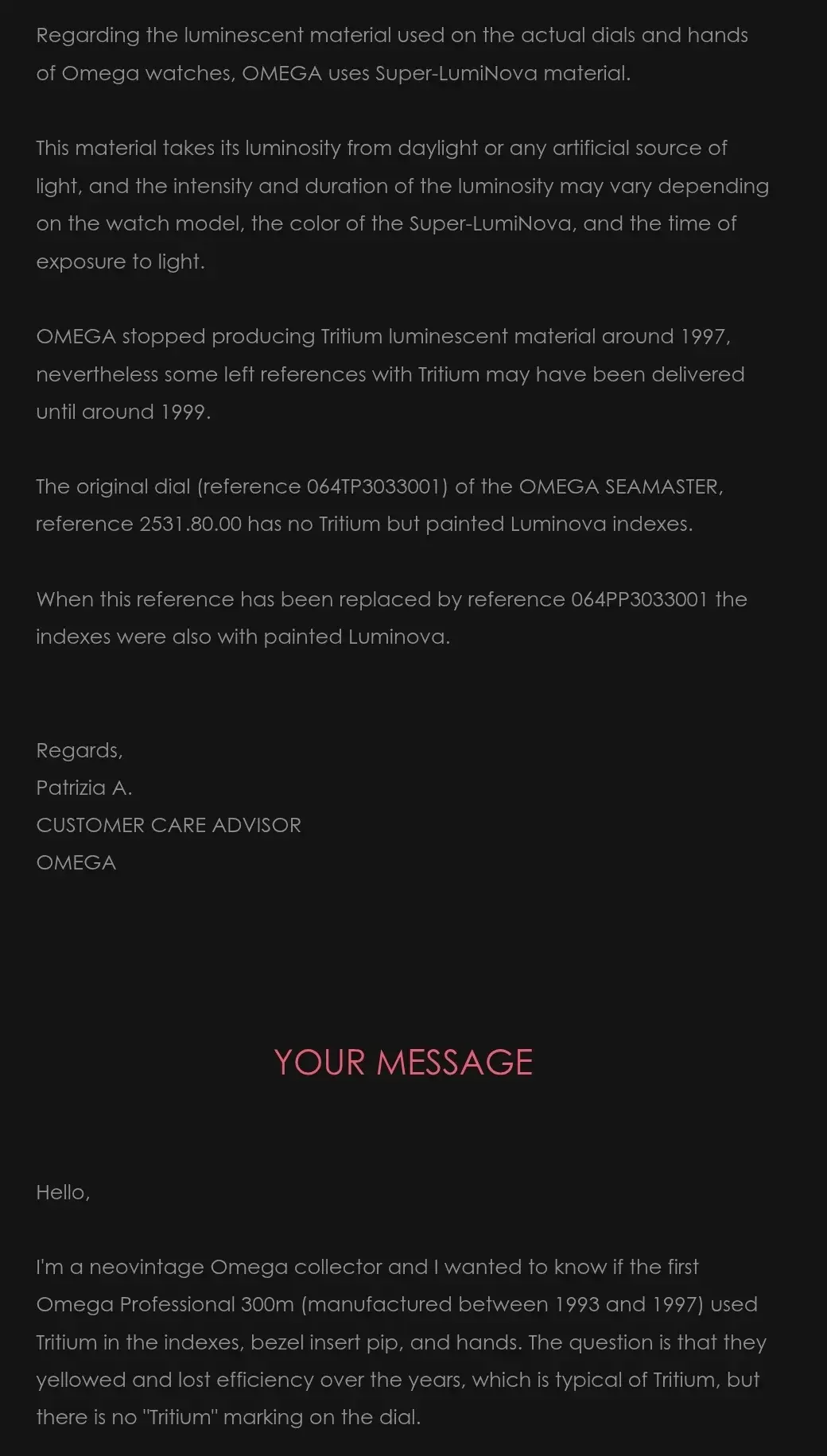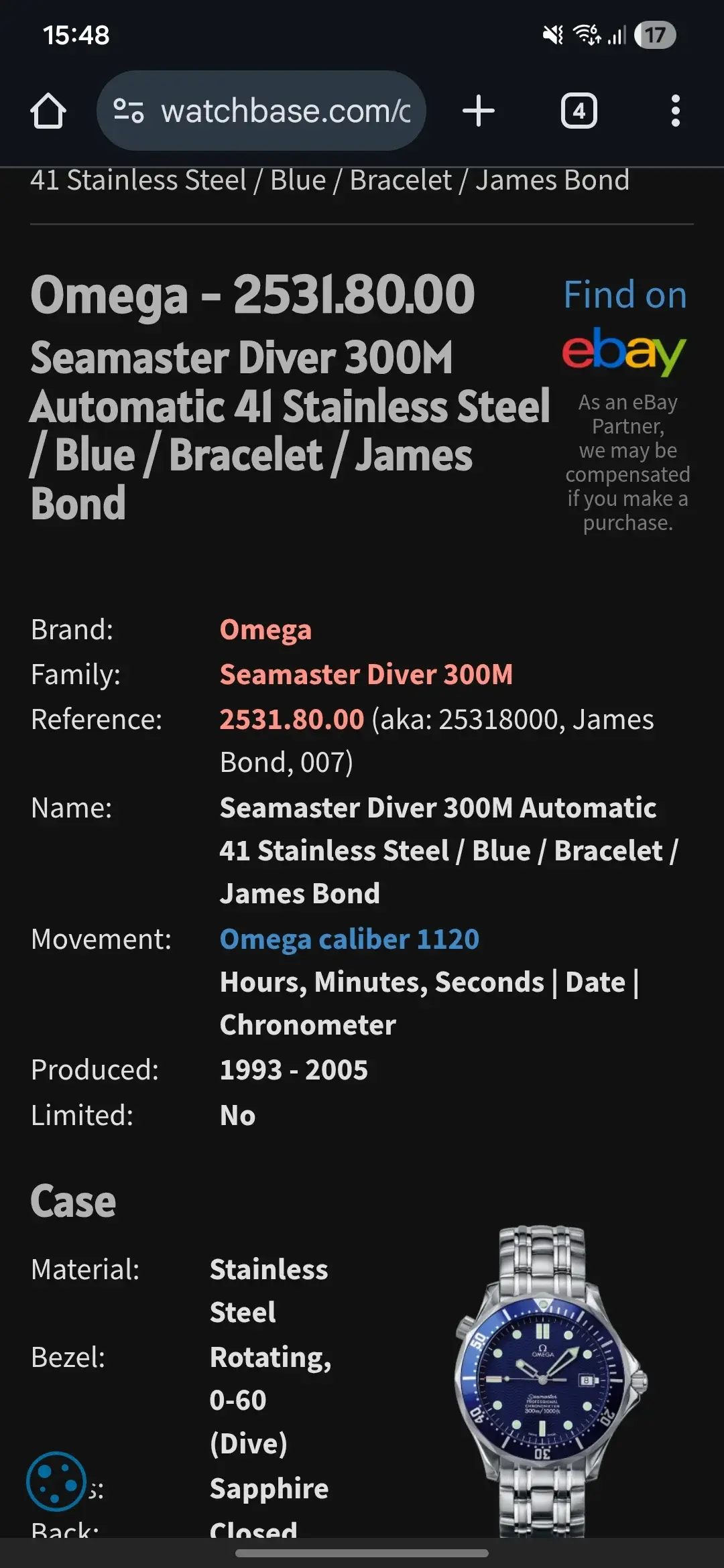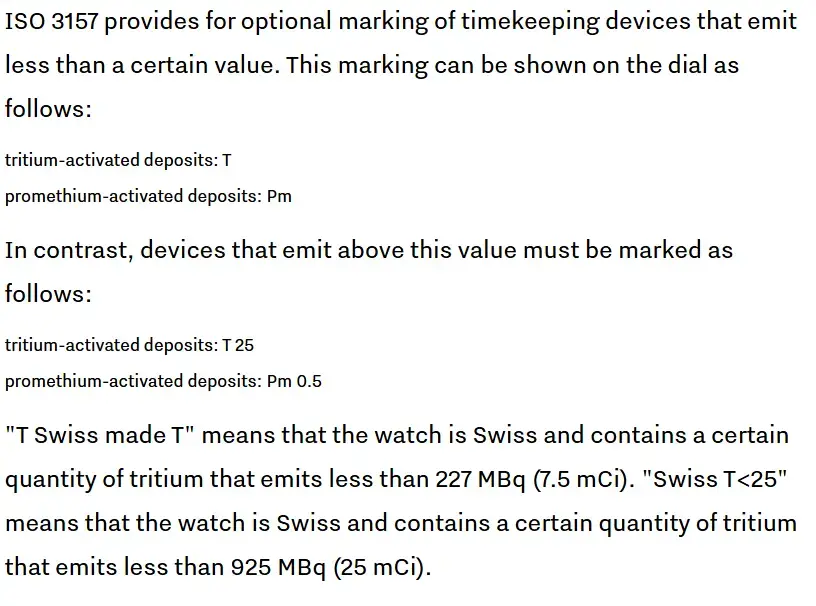Portanto, isso não é fácil de explicar, e você tem que deduzir o que está sendo indicado, mesmo que não seja dito diretamente. O que quero dizer com isso é que não há nenhum lugar onde a Omega declare explicitamente que ponteiros ou mostradores contêm trítio, mas isso não significa que não possamos deduzir que sim.
Como observado, há duas letras no número de peça do mostrador. TP para o mostrador original e PP para o mostrador atual. Então, vamos analisar a Instrução de Trabalho 61 da Omega, que se chama codificação de material. Incluirei quatro designações para ilustrar esse ponto. As duas primeiras listadas não estão mais "ativas", o que é um ponto fundamental.
"TP - Placa de metal, índice pintado" - este é o mostrador original do relógio Bond, então os índices foram pintados
"TT - Placa de metal, índice de metal" - isso seria para um mostrador com marcadores aplicados com material luminoso
"PP - Superluminova, índice pintado" - esta é a designação atual do mostrador do relógio Bond
"PT - Superluminova, índice de metal" - esta é a designação atual para um mostrador com marcadores aplicados com material luminoso
Então, no mostrador do relógio Bond, o e-mail que você recebeu afirma que todos os mostradores eram Luminova. Mas se isso fosse verdade, por que mudariam a designação de TP para PP e declarariam apenas que a versão PP usa Luminova na instrução de trabalho 61?
A única coisa que posso concluir é que TP não significa Luminova.
Aqui está outro dado que, para mim, é basicamente a prova cabal: se eu procurar o mostrador do Speedmaster para o período em que sabemos que eles eram equipados e marcados como mostradores de trítio, aqui está o número da peça:
064TP3052001
Os novos mostradores são:
064PP3052001
Então, claramente, para os mostradores Speedmaster, TP significava Trítio, mas eles dizem que o mesmo código de material não era Trítio no relógio Bond? Isso não faz sentido algum. O objetivo desses códigos é conseguir identificar o material apenas pelo número da peça, e se esse significado muda dependendo do relógio em que a peça está, todo o sistema deixa de fazer o que deveria.
Então, provavelmente quem respondeu ao e-mail não é uma pessoa "técnica" e realmente não tem ideia.
Espero que isso ajude.


